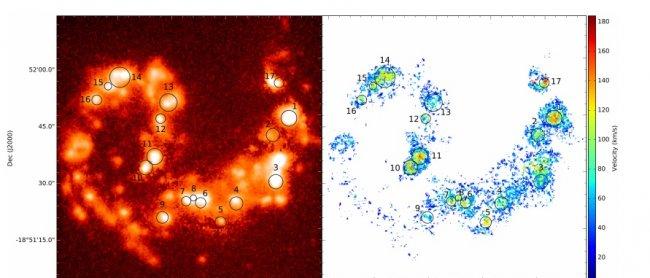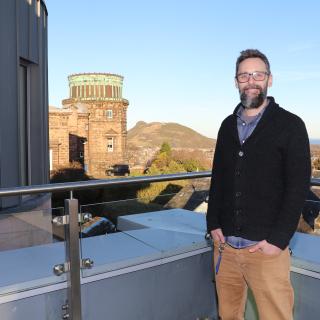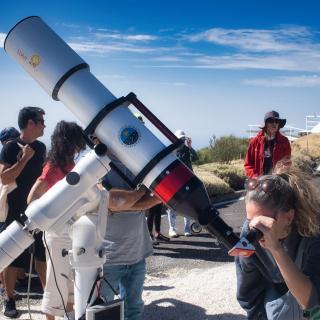A team of scientists led by members of the Instituto de Astrofísica de Canarias (IAC), in collaboration with the Universidad Nacional Autónoma de México (UNAM), have detected and measured a complete “carpet” of expanding bubbles in the interstellar medium of the “Antennae”, a pair of galaxies in interaction which will eventually merge. The work, published in Monthy Notices of the Royal Astronomical Society is based technically on observations with an instrument called GHaFaS on the 4.2 m William Herschel Telescope, at the Roque de los Muchachos Observatory, (ORM) (Garafía, La Palma, Canary Islands). This instrument is capable of making a map of the velocities of a complete galaxy using the emission from the ionized hydrogen in its interstellar medium.
To detect the huge bubbles in the combined galaxy disc, the team has used "BUBBLY", a method developed by some of the current authors, and has already been published in the same journal in 2015. These huge bubbles in galaxy discs are caused by the stellar winds and supernova explosions in clusters of very hot very massive stars. They can range in size from a couple of light years to a thousand light years, depending on the number of stars in the cluster and how massive they are. The larger ones are often called “superbubbles”
In the study published today, based on observations made with GHaFaS instrument, the BUBBLY method has been applied to the “Antennae”, in which the interaction between the galaxies is causing a major burst of star formation, leading to many star clusters, each surrounded by a bubble of expanding gas. The researchers have been able to calculate how much energy is being fed into the interstellar medium from each individual bubble, and from the sum total of all the bubbles, including a decent estimate for those which are too small to be fully detected. The group has initial evidence of the presence of the expanding bubbles in a wider sample of nearby galaxies and will process the results of the sample soon.
“The importance of the bubbles” says Artemi Camps-Fariña, the lead author on both of the articles “is that they let us measure the effects of feedback caused by massive star clusters on the rest of the galaxy in which they lie. This is being recognized as very important. Theorists who aim to model how galaxies are formed and evolve had a major problem when they made models withoug this feedback.
Without the bubbles, the formation of stars was far too quick and all the available gas would have been used up by the time the universe had reached one tenth of its present age. All the galaxies would by now be passive with no new stars forming. It is more than probable that the processes which eventually gave rise to life would not have had time to operate. But the feedback process, in which massive star clusters blow large bubbles, slows down the star formation by stopping new gas from condensing so quickly into stars. It reduces the overall star formation rate by a big factor, and has let galaxies such as the Milky Way produce their stellar populations in a much more extended time-frame.”
“Although this general idea is not new” says John Beckman, one of the authors of both articles “our ability to measure the properties of the bubbles is giving us a way to quantify the effect and to match basic theory with the observed properties of galaxies”
Article: “Physical properties of superbubbles in the Antennae galaxies”, by ArtemiCamps-Fariña, et al. Monthly Notices of the Royal Astronomical Society). https://arxiv.org/abs/1703.02902
Article of 2015: “BUBBLY: a method for detecting and characterizing interstellar bubbles using Fabry-Perot spectroscopy”, By Artemi camp-Fariña et al. Monthly Notices of the Royal Astronomical 2015MNRAS.447.3840C
Contact:
Artemi Camps-Fariña: %20artemic_ext [at] iac.es (artemic_ext[at]iac[dot]es)
John Beckman: jeb [at] iac.es (jeb[at]iac[dot]es) and +34922605263



